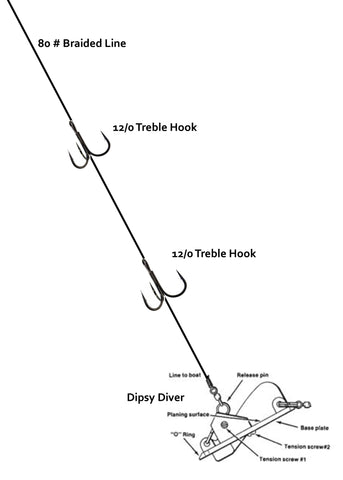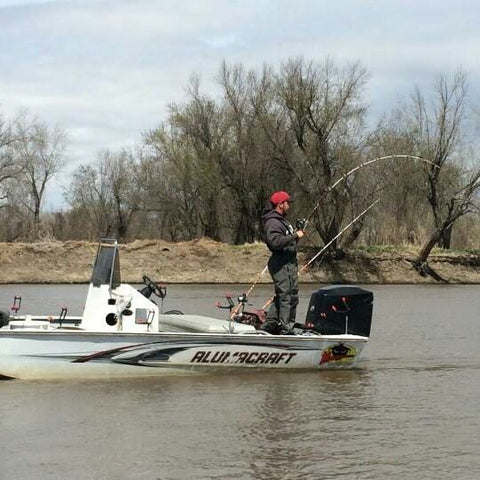April 09, 2018
Paddling Spoonbills with Johnny Coleman
Phillip Gentry
If you want to test the strength and durability of a heavyweight fishing rod, try snagging a 60 to 70 pound spoonbill while trolling at 5 miles per hour. That’s exactly the rush B’n’M catfish pro-staffer Johnny Coleman is looking for during March and April when he takes a break from his regular catfish trips as part of his Flats ‘N’ Cats Guide Service in Des Moines, Iowa and heads due south to Missouri to fish for spoonbills in Truman Reservoir, Missouri.

Spoonbills, or paddlefish, are a close relative of the sturgeon and grow to large sizes for freshwater fish.
The spoonbill, also commonly known as a paddle fish, is a close relative of the sturgeon. The ancient fish feed on plankton and migrate up river where they can be marked on sonar moving along the edges of fast water channels in 40 – 50 feet of water.
Spoonbills, don’t have teeth, and because they filter feed on plankton, practically the only way to fight one on rod and reel is to snag it. Over the years, anglers have devised a pretty fool-proof method for hooking up with spoonbills.
“I use 80 pound braided line on an Okuma Magna Pro line counter reel. I pair that with a B’n’M Silver Cat Magnum rod,” said Coleman. “We snag the fish trolling at about 4 – 5 miles per hour and when you mark a school of them on the graph and hook into one, the fish will rip off 100 feet of line in a flash.”

A typical spoonbill rig employs a Dipsy Diver on the bottom with large treble hooks up the line to snag the fish.
On the business end of the line, Coleman uses a Dipsy Diver, an underwater planning device that dives like a crankbait, but can be adjusted to run right, left, or straight. Normal use of the planer is to attach a length of leader and a fishing lure to the rear swivel of the device, but since snagging is required, the hooks are attached up the line, above the diver with no lure attached to the rear.
“Missouri allows us to use multiple hooks so I set two, the first is about 18 inches above the Diver and the second is about 2 feet above the first hook,” said Coleman. “I use 10/0 to 12/0 treble hooks and a #1 Dipsy Diver, which will let you get to about 50 feet. You have to put out three times the amount of line as the depth you’re trolling, so the amount of line will vary from 50 to 150 feet.”
Coleman’s set up is to run four rods, two from each side of the boat and two from the stern. He sets the divers on the side rods to run right and left respectively while the two stern rods are straight or just barely angled. He puts the side rods out at 120 – 150 feet and the stern rods at 90 and 110, depending on what depth he’s marking fish on the graph.
“When you mark a big school, they’re usually suspended and you spook them,” said Coleman. “If they don’t get into the back lines, they usually run off to the side and you get them on the side rods.”

A snagged 60 pound fish can put a hurting on a fishing rod, but B’n’M’s Silver Cat Magnums are up to the test.
Spoonbills are native to the Mississippi and Missouri River drainages. Coleman prefers to fish Truman Lake, but other Missouri lakes – Lake of The Ozarks, Table Rock, and their tributaries also hold spoonbills.
Coleman said the limit is 2 fish per person and the fish must be 34 inches to keep. Catch and release of legal fish is not permitted to keep from fatally injuring fish that won’t be used. Undersized fish are released usually with minimal damage because of the fish’s size.
For more information on this exciting, unusual fishing adventure, or to book a catfishing trip in Iowa with Johnny Coleman, contact him by phone at (515) 205-9136 or visit his website at flatsncats.com
B’n’M Catfish rods can take anything you can dish out. To see more, view our online catalog at bnmpoles.com







